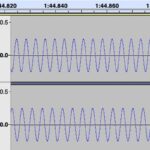

Oster also considered binaural beats to be a potentially useful medical diagnostic tool, not merely for finding and assessing auditory impairments, but also (because they involved different neurological pathways than ordinary auditory processing) for more general neurological conditions. In particular, Oster saw binaural beats as a powerful tool for cognitive and neurological research, addressing questions such as how animals locate sounds in their three-dimensional environment, and also the remarkable ability of animals to pick out and focus on specific sounds in a sea of noise (what is known as the "cocktail party effect"). Oster's paper was landmark not so much for its own new laboratory findings, but rather that in the way in which it identified and tied together the isolated islands of relevant research done since Dove, in a way that gave the subject fresh insight and relevance to scientific research.

While research about them continued after that, the subject basically remained a scientific curiosity until 134 years later, with the publishing of Gerald Oster's article "Auditory Beats in the Brain" (Scientific American, 1973). Heinrich Wilhelm Dove discovered binaural beats in 1839. 3 Hypothetical effects on brain function.Second, that binaural beats may influence the brain in more subtle ways through the entrainment of brainwaves and can be used to produce relaxation and other health benefits. First, they are of interest to neurophysiologists investigating the sense of hearing. Interest in binaural beats can be classified into two categories. The difference between the two frequencies must be small (below about 30 Hz) for the effect to occur otherwise the two tones will be heard separately and no beat will be perceived. The frequency of the tones must be below about 1,000 to 1,500 hertz for the beating to be heard. A beating tone will be perceived, as if the two tones mixed naturally, out of the brain.

The brain produces a phenomenon resulting in low-frequency pulsations in the loudness of a perceived sound when two tones at slightly different frequencies are presented separately, one to each of a subject's ears, using stereo headphones. This effect was discovered in 1839 by Heinrich Wilhelm Dove. Binaural beats or binaural tones are auditory processing artifacts, that is apparent sounds, the perception of which arises in the brain independent of physical stimuli.


 0 kommentar(er)
0 kommentar(er)
